Imagine if your most elaborate Shabbat meal happened every day for over 30 days. That’s what it’s like in the king cake season,” otherwise known as the days leading up to Mardi Gras, in New Orleans. From early January until mid-February, the king cake, a round cake shaped like a bundt cake, is served several times per day, always decorated in the royal colors of purple, green, and gold.
There are charts of king cake consumption that start with the initial surge and lead up to eating King Cake at every meal, says micro baker Nancy Pesses. Her challah king cakes are a twist on the traditional cakes that are now part of the season and sold at local markets and online through her website. “I am at the twice-daily king cake consumption rate already, and we haven’t even gotten to some of the early parades,” says Pesses. She started making her king cake challah during the pandemic before Rosh Hashanah in 2020, the same time many others started artisanal challah baking businesses.
Like many of us during the pandemic, she made more bread than she could eat, so she took the challahs to market and started taking orders. While growing up, king cakes were in every Jewish home she knew of, including her own. These cakes are traditionally baked with something strange hidden inside, like a bean. Sometimes, there’s a small plastic baby doll in it, intended to represent the baby Jesus, but king cakes are now more about celebrating the multicultural city than a religion.
“There was always a king cake (surprise) present,” says Pesses. “If you got the piece with the bean it, you had to buy the next king cake.” Some people swallow the bean to avoid buying the next round, she says.
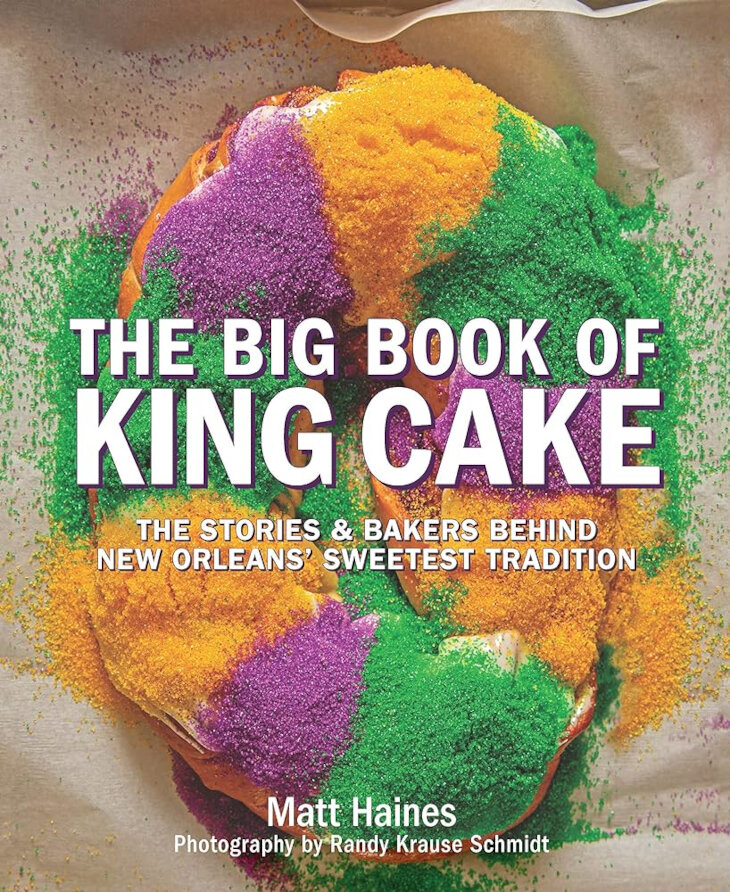
“King cake is so ubiquitous here that it's very common now for people to take the things they love about New Orleans and merge it with their own history,” says Matthew Haines, the Jewish author of The Big Book of the King Cake. “It's tradition here to be able to merge those two things.” It makes you feel a part of New Orleans, while maintaining your own culture. Instead of feeling ‘other,’ it does the opposite.”
“Honduran bakers make king cake with lava cream cheese,” says Haines. “A woman who grew up making chocolates with her dad makes amazing chocolate king cakes.”
Alon Shaya, who was born in Israel, grew up eating babka and loves that, but he also loves his new hometown of New Orleans, says Haines, so he makes babka king cake with cinnamon and pomegranates. As the baby represents something deeply meaningful for Christians, pomegranates are meaningful in Judaism for having 613 seeds, the same as the number of commandments in the Torah.
“When I wrote the Big Book of the King Cake, I thought it would be a bunch of pictures of king cakes,” says Haines. “But it ended up being a book that told the personal stories behind each cake.” New Orleans is a community that values storytelling, and king cakes offer a path to do so in vibrant colors.
The king cake book would never have happened if Haines hadn’t gone to a party with a contest to pick the best king cake. “I’m very competitive and started creating spreadsheets,” says Haines. He compared articles and noticed how many were in the best-of lists. One list had 88, he says.
He spent so much time researching king cakes that his nickname on a hike along the Appalachian Trail was “King Cake.” He wrote articles on king cakes for his local paper, and they became his most-read articles. “I learned I could have a career in writing from the popularity of my king cake articles,” says Haines.
Haines says the king cake tradition dates back to ancient Roman times. The Mardi Gras festival season is similar to other festivities celebrating the end of the fall harvest when, before refrigeration, it was important to eat as much as possible before the harvest spoiled, he says.

Some parades in the last 30 to 40 years have included Jewish parade crews and floats. The Jewish parade crew Krewe du Jieux was established in 1996 — they throw golden bagels instead of the beads synonymous with Mardi Gras. The Museum of the Southern Jewish Experience’s features Ruth Bader Ginsburg fighting for rights, fashioned by the Krewe du Mishigas for their 2019 Mardi Gras parade.
For a taste of king cake you can make at home, try Nancy Pesses’s king cake challah recipe.
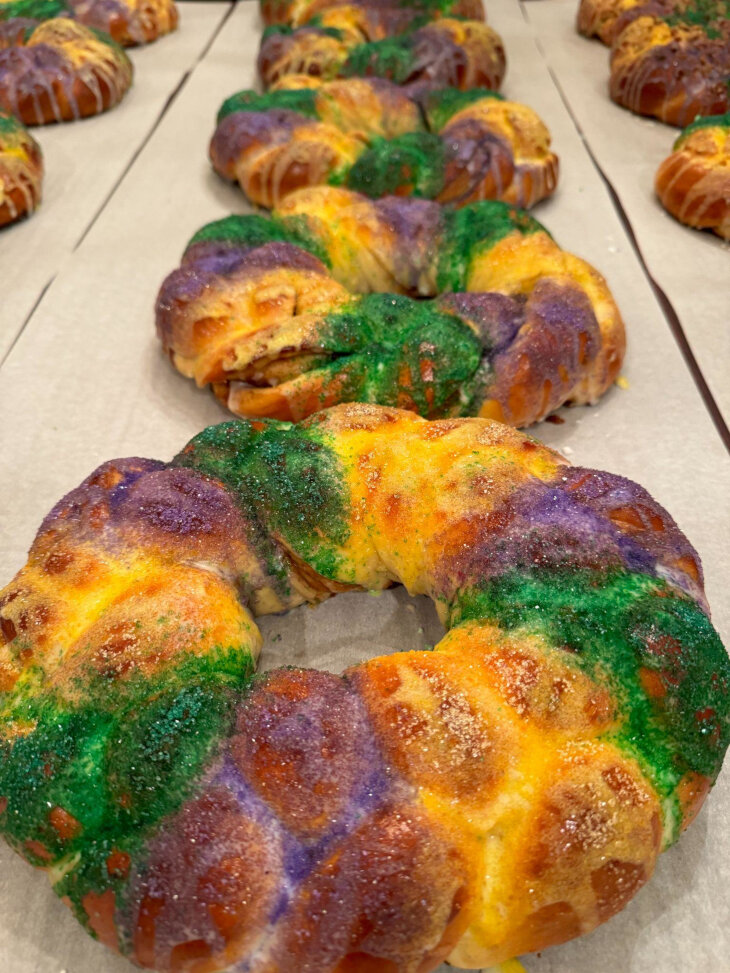




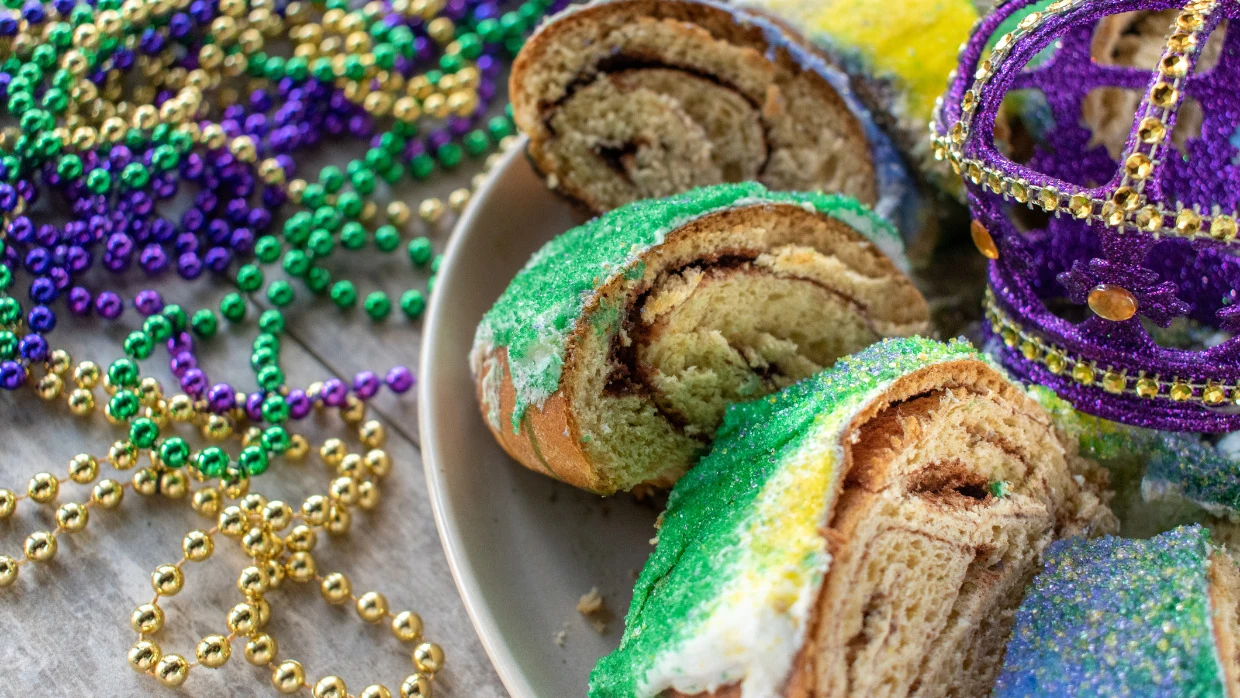



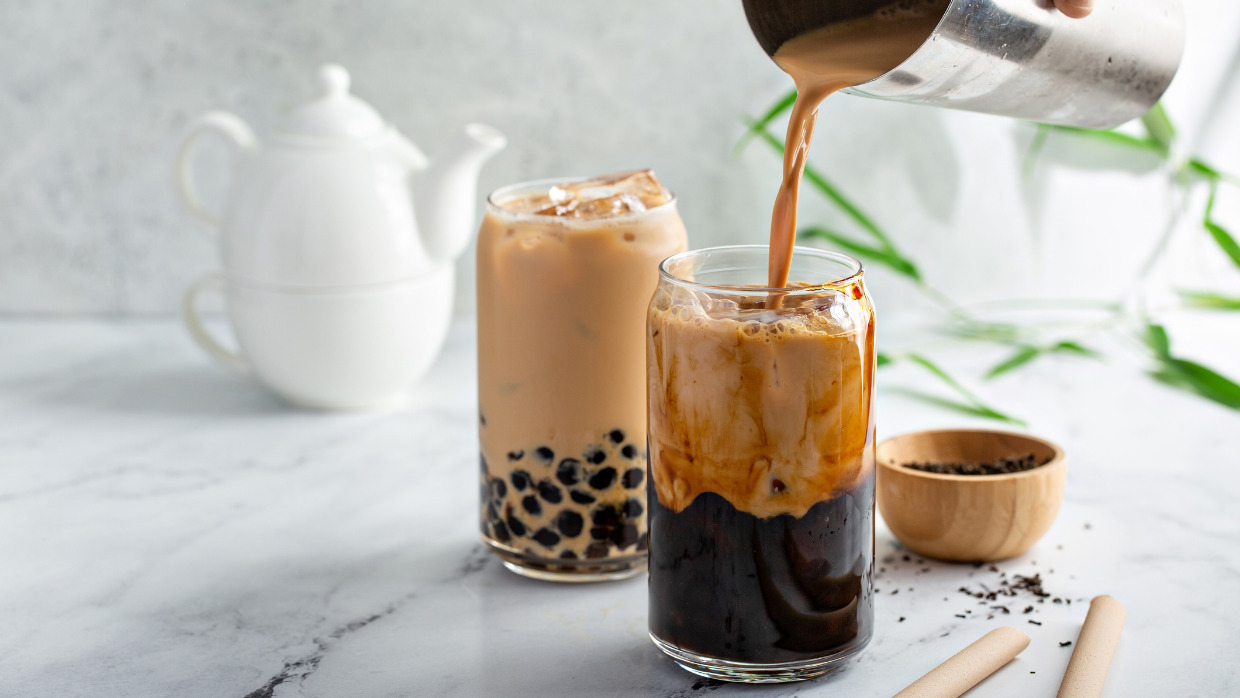



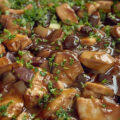




Wonderful and delicious looking. Congrats Nancy Pesses. I am sharing this great article
Love this! We are a Jewish military family serving in Louisiana—am sharing the article.
Thanks!